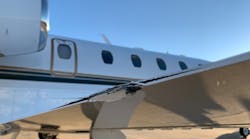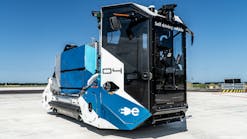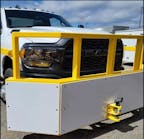According to the Cayman Islands Airports Authority (CIAA), an airside incident in which an airplane collided with ground support equipment (GSE) occured on Feb. 9.
According to the CIAA, a Delta 737-900 aircraft made contact with a stairs truck owned by their ground service provider FADS, which was staged on the apron. The contact caused the stairs truck to tip over and damaged the wing of the aircraft.
“The safety and security of our passengers is our top priority. We are conducting a thorough investigation to understand the circumstances that led to this occurrence and collaborating closely with airport partners to prevent such incidents in the future,” CIAA officials said, noting no injuries were reported.
Ground damage is a term used across the aviation industry to describe any damage to aircraft that occurred while the aircraft was on the ground.
For example, recently a at Chicago O'Hare International Airport (ORD), a ground service provider collided with an Aeromexico aircraft while driving a baggage cart. The report indicated that 100 passengers were forced to deplane after the piece of ground support equipment (GSE) damaged the aircraft's engine.
“This term covers a vast range of areas on the airfield as well as several different scenarios. Some of the most common areas on the airfield where ground damage takes place is on the ramp or apron. Aircraft can taxi into another aircraft, into GSE, or into a structure. Other areas of ground damage can occur while the aircraft is parked and being serviced with GSE to include fuel trucks, tugs, golf carts, GPUs, lavatory carts, potable water carts, O2 racks, people, etc. The most common amongst aircraft service providers is aircraft damage occurring during the tow operation. Whether on the ramp apron or during hangar movements, towing is the most common area for damage to occur,” said Brandon Popovich, manager of safety and training at the National Air Transportation Association (NATA), in an interview with AviationPros.







